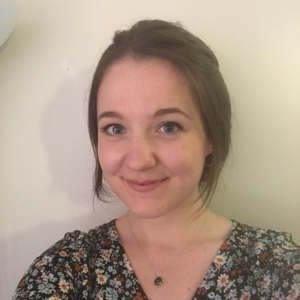


By Jen Boyd, Dr Charlotte Buckley and Amber Copeland
“Wow that sounds really interesting… but I don’t get it…”
Is something all three of us have heard when describing our research using computational modelling. We completely understand this point of view. It may or may not be a coincidence, but only a few years ago we all studied psychology. We adopted and relied on methods in our research which only compared groups based on their mean scores. Continuing in our research careers, we now employ computational methods, which are more complex to implement but can deepen our understanding of alcohol consumption and harm. These are Drift-Diffusion Modelling and Agent-Based Modelling.
- Drift-diffusion models – based on the assumption that decision-makers accumulate “noisy” evidence for different response options, and that decisions are made once the accumulated evidence for one of the response options crosses some decision threshold.
- Agent-based models – simulate the actions and interactions of autonomous agents (e.g., individuals, households) to understand how these actions and interactions result in emergent phenomena like alcohol consumption/harm.
Parameters are important aspects of both models and can be thought of as variables that represent different things. Some examples include age, gender, cautiousness, and drinking habits.
While we choose different modelling methods, we can see similarities in the strengths and challenges of applying these techniques within the field of addiction.

Strengths
Both models can advance our understanding of addiction, alcohol consumption and harm.
Drift-diffusion models take raw observed behavioural data from experimental tasks as input (e.g., speed, accuracy) and from this generate parameters that reflect the internal cognitive components of decision-making (e.g., cautiousness, accumulation of evidence for a response option). In doing so, the model isolates the contribution of different factors that determine individual “in-the-moment” decisions.
Agent-based models represent people as agents in a model and assign each person parameters that aim to represent individual properties including psychological constructs, which are informed by existing research and theory. These models can help us to understand how theoretical constructs may be contributing to alcohol use in a population and can increase our understanding of how behaviours may change in response to different interventions.
These modelling techniques capitalise on existing data and move from testing relationships between variables to trying to understand the underlying mechanisms.
Drift-diffusion models use behavioural data collected in experimental tasks to tell us something we wouldn’t otherwise know about the internal cognitive components of decision-making. Drift-diffusion model parameters can go beyond the behavioural data alone to offer new interpretations of research findings (e.g., Pirrone et al., 2017).
Agent-based models also use existing data and draw on large, secondary data sources to input parameters for people within the model, for example, their drinking habits. They also complement existing research as they simulate experimental hypotheses and can be used to model everything from the behaviour of neurons to the actions of nations.
Challenges
A lack of knowledge of specialist programming languages (e.g., C++) can be a barrier to adopting these approaches. Easier variations of models (EZ-diffusion model) and software (NetLogo) are available and enable model development. New collaborations between software specialists and social scientists can be formed to support more complex model development. Workshops can also help to familiarise social scientists with the software required and can help researchers apply their existing skills to computational modelling.
A second challenge is the communication of research findings. Papers relevant to alcohol consumption using these methods may be published in specialist journals (e.g., Journal of Artificial Societies and Social Simulation) and therefore not always discovered by the addiction community. A wider network of modelling specialists in the field would help facilitate the publication of models in addiction and alcohol use journals.
Final thoughts
Despite the challenges, we are grateful to be applying these modelling techniques and believe that they can have an important impact on addiction research. These modelling techniques stand ready to make substantial advancements in our field. We hope other researchers will consider adopting these methods in the future.
Anyone interested in learning more about drift-diffusion modelling can contact Amber Copeland (acopeland1@sheffield.ac.uk), whilst anyone interested in learning more about agent-based modelling can contact either Jen Boyd (jeboyd1@sheffield.ac.uk) or Dr Charlotte Buckley (c.m.buckley@sheffield.ac.uk).
Jen Boyd is a PhD candidate at the School of Health and Related Research, University of Sheffield
Dr Charlotte Buckley is a Research Associate at the Department of Automatic Control and Systems Engineering, University of Sheffield
Amber Copeland is a PhD candidate at the Department of Psychology, University of Sheffield
The opinions expressed in this post reflect the views of the author(s) and do not necessarily represent the opinions or official positions of the SSA.
The SSA does not endorse or guarantee the accuracy of the information in external sources or links and accepts no responsibility or liability for any consequences arising from the use of such information.

